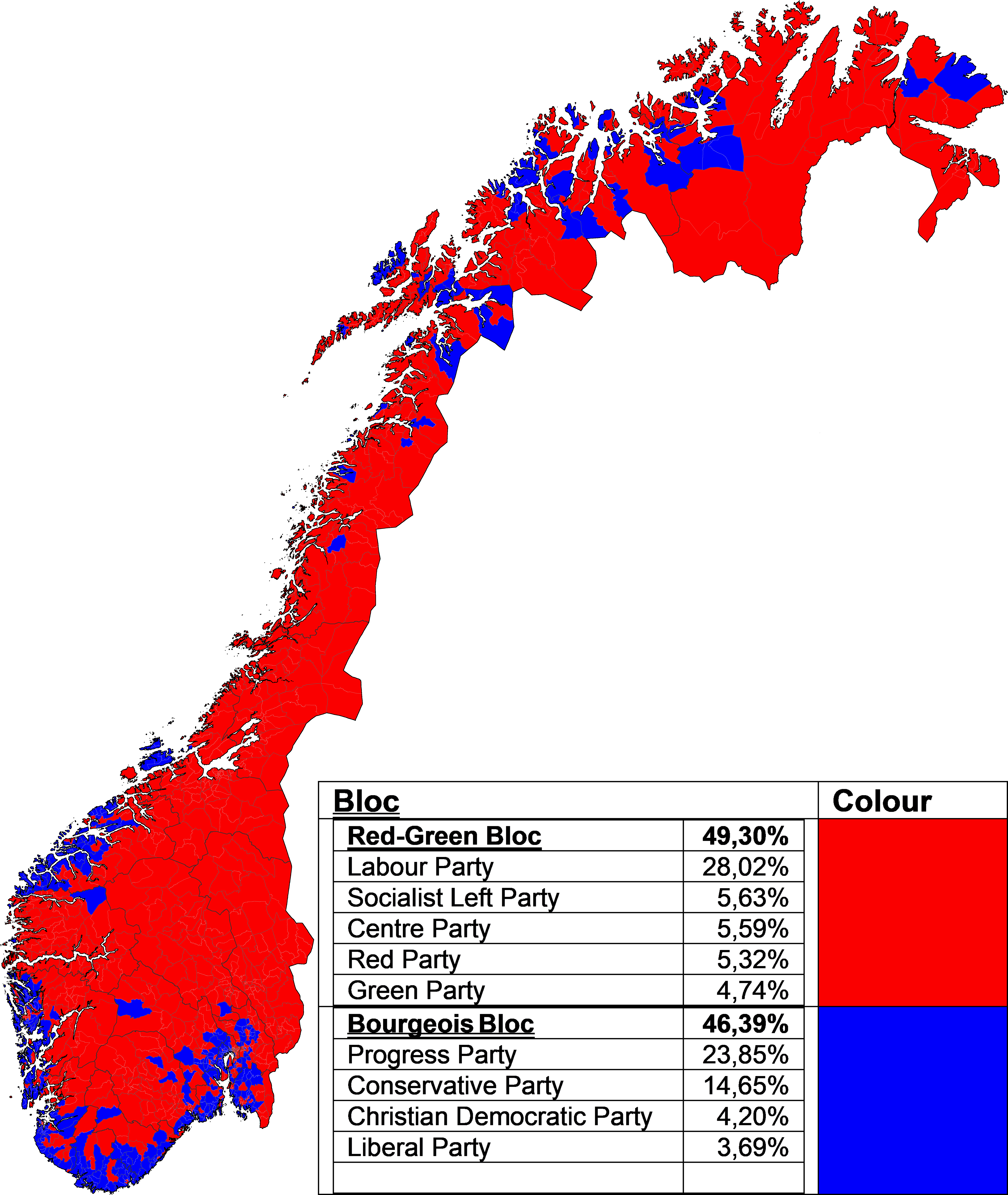Largest Bloc in Each Precinct Map of Norway 2025


Alex Cartwright
Senior Cartographer & GIS Specialist
Alex Cartwright is a renowned cartographer and geographic information systems specialist with over 15 years of experience in spatial analysis and data...
Geographic Analysis
What This Map Shows
The visualization titled "Largest bloc in each precinct in the 2025 Norwegian parliamentary election" presents a clear representation of the dominant political parties or blocs within various electoral precincts across Norway. This mapping serves as a crucial tool for understanding the political landscape leading up to the elections, highlighting which parties hold sway in different regions of the country. Each precinct is color-coded to reflect the largest political bloc, providing insights into regional political preferences and affiliations.
Deep Dive into Political Blocs in Norway
Political blocs in Norway are crucial for understanding the country's governance and electoral dynamics. Norway employs a parliamentary system where parties compete for seats in the Storting, the national legislature. These blocs often consist of multiple parties that band together to form a coalition, especially in a system characterized by proportional representation.
Currently, the primary political blocs in Norway include the Labour Party (Ap), the Conservative Party (H), the Progress Party (FrP), the Centre Party (Sp), and the Socialist Left Party (SV). The dynamics among these parties can shift significantly from election to election, influenced by various factors including economic conditions, social issues, and public sentiment.
Interestingly, the largest bloc in each precinct can reveal much about regional identities and priorities. For instance, urban areas like Oslo tend to lean more towards progressive parties such as the Labour Party and the Socialist Left Party, reflecting a more diverse demographic and progressive policies focused on social welfare and environmental issues. Conversely, more rural areas might show stronger support for parties like the Centre Party or the Progress Party, which often prioritize agricultural interests and regional development.
Furthermore, voter behavior in Norway can be influenced by issues such as climate change, immigration, and economic disparity. The 2025 elections are expected to be particularly interesting as parties are likely to tailor their platforms to resonate with the electorate's evolving concerns. The importance of local issues cannot be overstated; for example, areas facing significant economic challenges may gravitate towards parties promising robust economic reforms.
Regional Analysis
Examining the map further, we can see distinct regional patterns emerge. For instance, in the northern regions of Norway, the Labour Party often dominates, particularly in areas with a strong emphasis on welfare and public services. The party's historical roots and commitment to social democratic principles resonate with voters who prioritize community welfare.
In contrast, the coastal regions may show a stronger presence of the Progress Party, a reflection of the population's concerns about immigration and economic management. What's fascinating is how these regional differences are not just about party loyalty but also reflect deeper socio-economic divides. For example, urban precincts often prioritize environmental sustainability and innovation, while rural precincts may focus on job creation and agricultural support.
Moreover, the Centre Party's influence in central Norway, where rural concerns are more pronounced, demonstrates the need for political platforms to address specific local issues. The Centre Party's advocacy for agricultural and regional policies makes it a key player in these precincts.
Significance and Impact
Understanding the political landscape as depicted in this map is vital for several reasons. Firstly, it helps predict the potential outcomes of the elections and the future composition of the Storting. Political parties often adjust their strategies based on where they find support, and this map can serve as a guideline for campaign efforts.
Moreover, the implications of electoral outcomes extend beyond mere party representation; they affect policy-making on critical issues such as climate change, social equality, and economic development. For example, a stronger Labour presence could lead to more progressive policies focused on social welfare, whereas a rise in conservative support might shift the focus towards fiscal conservatism and reduced immigration.
As we approach the 2025 elections, keeping an eye on these political blocs and their geographical representation will be crucial. The landscape is ever-changing, influenced by global trends, local issues, and the electorate's evolving priorities. Understanding these dynamics not only enriches our grasp of Norwegian politics but also highlights the interconnectedness of geography and political behavior.
In conclusion, the map of the largest bloc in each precinct offers a snapshot of political affiliations that shape Norway's governance. As elections draw near, the insights gleaned from this visualization will be invaluable for voters, analysts, and political strategists alike.
Visualization Details
- Published
- October 2, 2025
- Views
- 46
Comments
Loading comments...